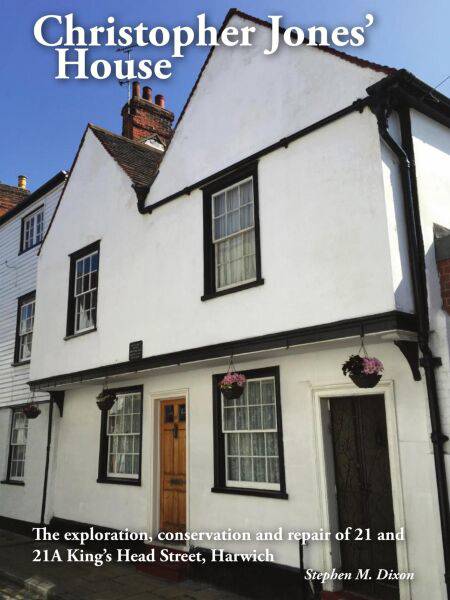
- Afhalen na 1 uur in een winkel met voorraad
- Gratis thuislevering in België vanaf € 30
- Ruim aanbod met 7 miljoen producten
- Afhalen na 1 uur in een winkel met voorraad
- Gratis thuislevering in België vanaf € 30
- Ruim aanbod met 7 miljoen producten
Christopher Jones’ House: The Exploration, Conservation and Repair of 21-21A King’s Head Street, Harwich E-BOOK
Stephen DixonOmschrijving
Built in about 1475, and in parts possibly much earlier, this typical East Anglian timber framed building was home to Christopher Jones, the famous captain of the ship Mayflower which took the Pilgrim Fathers to Cape Cod in 1620, returning in 1621. It was previously his father's house and the more famous son enlarged the house to its present extent by joining two nearly contiguous medieval houses to benefit his growing family and status as a burgess of the borough of Harwich. The building of the chimney stack may have been funded by the Mayflower voyage contract.
Christopher Jones' House is the only authentic surviving connection between Harwich and The Mayflower and since 2018 has been partly open to tourists. The house is notable for the extent to which the medieval timber frame and medieval, Tudor and Stuart period wattle and daub and lath and plaster survive intact at all levels.
The author takes us on a journey through time as he peels back the layers of wallpaper, plasterboard (rockboard), cement and modern synthetic paints to reveal a building that has stood since the middle ages but which also preserves the later developments of the Stuart, Georgian and Victorian periods and the first half of the 20th. Century. The author considers features in the house that might provide clues as to the character of Christopher Jones junior and his ship, which was berthed directly alongside the house on the Quay in Harwich.
The book is profusely illustrated in colour. It will be valuable for local and architectural historians, historians of the Mayflower voyage and the Pilgrim Fathers and to all those interested in the tumultuous history of the early 17th. Century.
Specificaties
Betrokkenen
- Auteur(s):
- Uitgeverij:
Inhoud
- Taal:
- Engels
Eigenschappen
- Productcode (EAN):
- 9781527279438
- Verschijningsdatum:
- 18/09/2023
- Uitvoering:
- E-book
- Formaat:
- ePub

Alleen bij Standaard Boekhandel
Beoordelingen
We publiceren alleen reviews die voldoen aan de voorwaarden voor reviews. Bekijk onze voorwaarden voor reviews.











